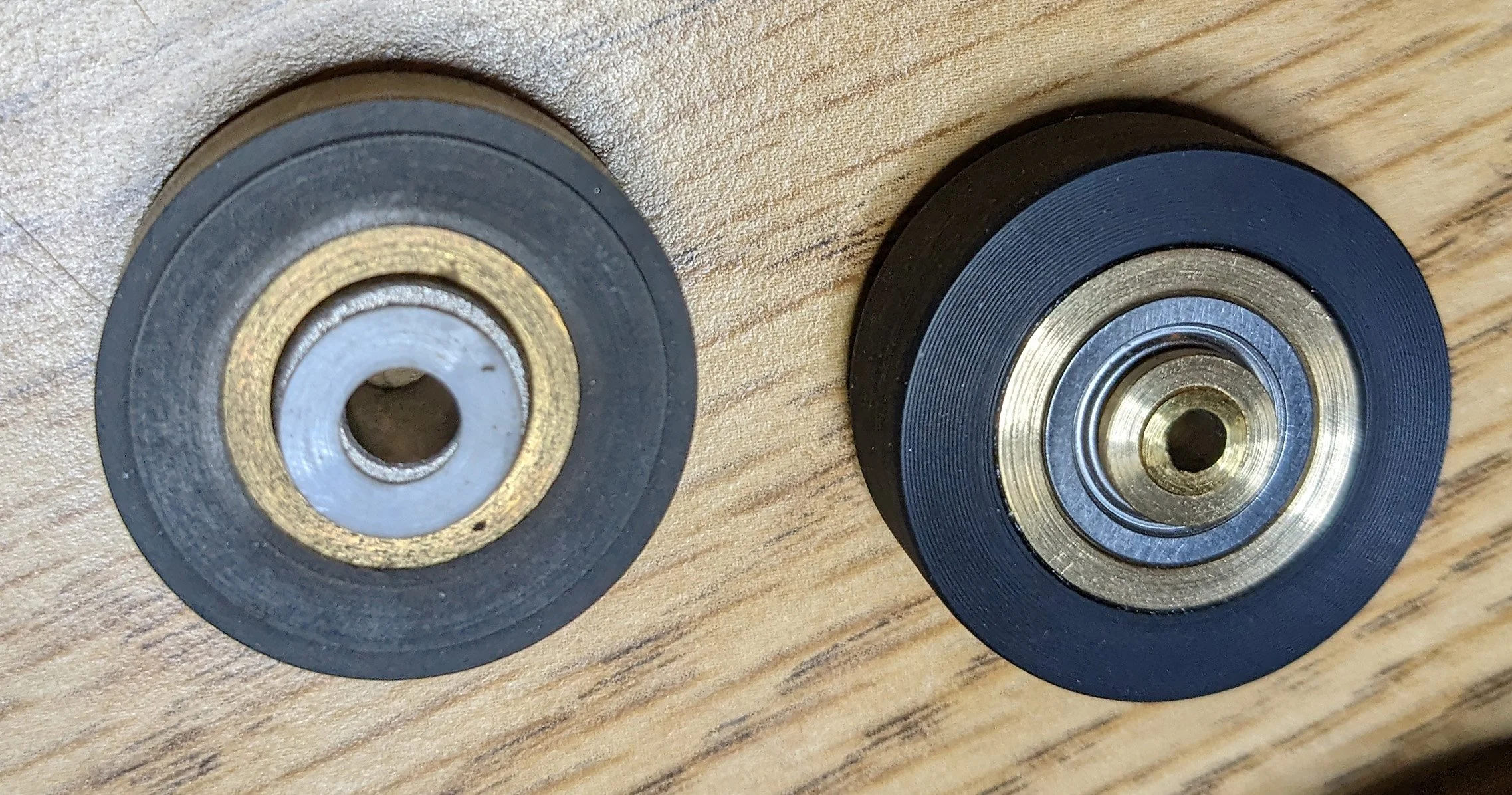Rubber Restoration: Rubbing New Life into Obsolete Machines
Machine obsolescence occurs in the backgrounds of our lives. As new machines take shelves, old formats slip through, no longer compatible with the tech of the everyday. When the time comes to look at old memories, you might find the world has somewhat forgotten your VHS tapes. Where did you even put the old VCR? Once common machines are no longer made, leaving only the existing supply ever dwindling?
An old and cracked Studer pinch roller next to a newly manufactured one imported from Europe by Archival Works.
It’s not quite so dire, really. Those of us in the business of media restoration have picked up a trick or two. Machines groaning under time’s weight can be spruced up a bit, allowing access to machines that ran the end of their life to run again. The fight, as is often the case in retaining physical media, is against decay.
A rubber pinch roller inside a JVC VHS deck that was restored by Archival Works in 2025.
What’s the first component to give way in a VCR? As is often the case, as many mechanics know well, rubber is the fail point. As a VCR is unlikely to be met with high moisture, destruction from material decay will be due to rubber aging before metal gives way. Rubber parts, as was the case for the tape machine we are using for our example, tend to be highly customized and hard to replace. Replacement is often out of the question. It would be improvident to create e waste from one failing component in an otherwise fully functional machine.
Fortunately, there are steps you can take to restore rubber. To begin this process, the surface should be carefully swabbed with denatured or isopropyl alcohol. Denatured alcohol is a stronger solvent, and therefore might cut through grime more easily, but it dissipates slower than isopropyl alcohol and therefore requires more caution when used to clean your electronics. ReAgent’s chemistry blog advises caution when using denatured alcohol because it leaves some residues and is a mild skin irritant. Clean the surface using a microfiber cloth. It is important to clean the surface due to the expected collection of debris as well as the accumulation of paraffin wax. Martin’s Rubber Company explains that aging rubber leeches this byproduct. Rubber is not a homogeneous solution. With time, internal bonding agents and other additives will push themselves out of the rubber. This is part of why the rubber consistency will change with time. As such, after cleaning, you will need to use a rubber conditioner. But why do these additives exist? What is the conditioner providing your rubber?
Rubber has its elasticity due to the temporary “straightening” of otherwise kinky covalently bonded polymer chains, as explained by Walker Rubber Co. after being stretched, these chains return to their angled orientation. Walker Rubber Co further outlines that very viscoelastic polymers, polymers containing both viscous and elastic qualities, are called elastomers. Viscosity, often a quality attributed to liquids, describes a level of fluidity that is resistant to flowing. Rubber, thus, has liquid properties that allow its polymers to move around each other, while still maintaining enough friction to retain shape.
Unprocessed rubber contains very weak internal bonds and therefore is more fluid. Increasing the viscosity, or the internal bond strength, makes the rubber more rigid and therefore usable for things like your tape decks. Walker Rubber Co explains that cross bonding the polymer chains increases tensile strength, and makes it less susceptible to breaking apart in temperature changes. Adding bonds means creating more of a cohesive structure and therefore it requires more energy to break apart. Furthermore, by cross linking the polymers chains, the effect of kinking chains is not disrupted while also strengthening the initial shape integrity, meaning the elastic quality is magnified in strength and stability. You can imagine then, that the quality of rubber will deteriorate as the chemicals added escape the mixture, since elasticity would decrease.
Conditioners work to then restore deteriorating rubber, returning to it the properties that made it usable in your machine to begin with. Products like Rubber Renue work to dissolve the rubber so that the material can be rejuvenated. The conditioner also contains chemicals that deeply penetrate the material while breaking down hardened rubber. As such, elasticity is able to return to the newly “hydrated” rubber. In short, conditioner helps your rubber bounce back.
At Archival Works, we work to keep our rubber healthy with regular maintenance of our equipment. The machines we have are keys to people’s memorabilia, data, and history. With some thoughtful labor, and conditioned elastomers, we can keep unlocking treasures.


